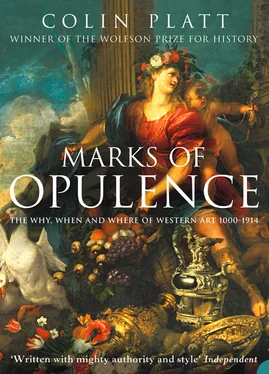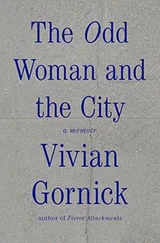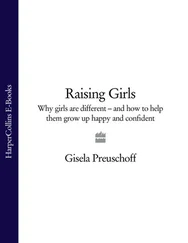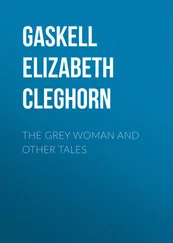O how innumerable a crowd of monks [apostrophized Peter the Venerable, Abbot of Cluny] has by divine grace multiplied above all in our days, has covered almost the entire countryside of Gaul, filled the towns, castles, and fortresses; however varied in clothing and customs , the army of the Lord Sabaoth has sworn under one faith and love in the sacraments of the same monastic name. 25
Peter the Venerable’s increasingly démodé Cluniacs had long ceased to function as the Lord of Hosts’ front-line troops. However, they had already profited hugely from the new reforming emphasis which their long-lived abbots, Odilo (994–1049) and Hugh (1049–1109), had each helped promote in his turn. And what the reforms had begun to bring to them, even before 1100, were large numbers of parish churches, with their tithes and other offerings, formerly treated by lay owners as private property. It was Leo IX’s Council of Rome in 1050 which urged the restoration of all lost church revenues to their clergy. And that was immediately the message of Bishop Airard of Nantes in the 1050s, having in mind – he told his hearers – that ‘in France more than elsewhere the wicked custom has grown up that ecclesiastical revenues, tithes, and oblations are usurped by others than the ministers of the churches to which they rightly belong, and sustenance is evilly transferred from the clergy to laymen and from the poor to the rich.’ Airard’s message came too early to win general support; and he was driven from office in 1059 in favour of a pastor of the landowning party. Nevertheless, he had already secured the release before that time of several parish churches, including those of Rodald ‘who set an example to others and gave up everything he possessed and left it to me what to do with it, and I gave it all, just as it had been given to me, to St Martin and the monks of Marmoutier’. 26
That first eleventh-century trickle of church transfers rose to a flood after the triumph of the reforming party at the Concordat of Worms in 1122 had brought the Investiture Contest decisively to an end. And it is very clear that, as the conscience of lay proprietors increasingly got the better of them, the contemporary rebuilding of parish churches throughout the West owed more to changes of ownership than to population growth, to landowner wealth, to developing ritual, or any other cause. One especially well-documented example of such a rebuilding, where the new church still survives, is an arrangement of the 1170s by which William, son of Ernis, gave the English Cluniacs of Castle Acre three acres in Long Sutton ‘in the field called Heoldefen next the road, to build a parish church there. And my wish is that the earlier wooden church of the same vill, in place of which the new church will be built, shall be taken away and the bodies buried in it shall be taken to the new church.’ 27 Long Sutton, in the fertile Lincolnshire fens, was a developing market-town, and its church was ambitious from the start. For another century and more, church and town continued to grow in unison, before the Great Pestilence brought calamity and recession.
‘Each man [they say] must have a beginning, for the fair lasts but a while.’ 28 And for many reforming clergy, both in the twelfth century and the next, that beginning could come only in the towns. In particular, that was true of the regular canons – Augustinians for the most part – who, as priests as well as monks, attracted endowments which almost always took the form of parish churches. Then, in the thirteenth century, it was in the towns again that the friars – Dominicans and Franciscans, Carmelites and Austin Friars – made their homes. Not so the Cistercians, nor other ‘hermit-monks’, whose statutes from the start had provided that ‘none of our monasteries is to be constructed in towns, castles or villages, but in places remote from human intercourse’. 29 Paradoxically that policy, far from removing their abbeys from the natural growth-points of the economy, located them initially on those expanding frontiers of wealth – of clearance and reclamation, of conquest and new settlement – at which major development was still possible. Frontiers are hostile places. And when, in 1112, a young Burgundian nobleman, Bernard of Fontaines, joined the little community of ascetics settled since 1098 in ‘the wilderness known as Cîteaux … where men rarely penetrated and none but wild things lived’, it was weak and on the point of collapse. Yet just as soon as Bernard had absorbed Cîteaux’s disciplines, he left it again to found his own community in its image. And it was from Bernard’s Clairvaux – with Morimond and Pontigny and Cîteaux itself – that the huge expansion of the Cistercian order almost immediately took place, so that just forty years later, on Bernard’s death, there would be well over 350 abbeys in a mighty monastic family which even its rivals acknowledged to be ‘a model for all monks, a mirror for the diligent, [and] a spur to the indolent’ of all convictions. 30
‘That was the golden age of Clairvaux’, wrote William of St Thierry, re-telling the story of Abbot Bernard’s first two decades, when ‘men of virtue, once rich in goods and honour and glorying now in the poverty of Christ, established the Church of God in their own blood, in toil and hardship, in hunger and thirst, in cold and exposure, in persecution and insults, in difficulties and in death, preparing the Clairvaux of today, which enjoys sufficiency and peace.’ 31 But Bernard’s first ‘little huddle of huts’ at Clairvaux, ‘strangled and overshadowed by its thickly wooded hills’, was quickly filled to bursting by the many who hurried there to join him. And the standard Cistercian abbey of the order’s main expansion period – with ‘no statues or pictures’, with ‘windows of clear glass’, and with ‘no bell-towers of stone’ (provided the statutes) – would have had much more in common with the new Clairvaux II after 1135, when the saint at last agreed to its rebuilding. ‘Should you wish to picture Clairvaux’, begins a famous description of Bernard’s second abbey, ‘imagine two hills and between them a narrow valley, which widens out as it approaches the monastery. The abbey covers the half of one hillside and the whole of the other. With one rich in vineyards, the other in crops, they do double duty, gladdening the heart and serving our necessities, one shelving flank providing food, the other drink.’ Characteristically, though, it was not in his account of Clairvaux’s buildings – as a Cluniac might have done – that the Cistercian author came to life, but in his transparent delight in the tumbling waters of the Aube and in the ‘smiling face of the earth’. 32 It was another Cistercian writer, Gilbert of Swineshead, who described the site of his own English abbey as ‘a secret, cultivated, well-watered, and fertile place and a wooded valley [which] resounds in springtime with the sweet song of birds, so that it can revive the dead spirit, remove the aversions of the dainty soul, [and] soften the hardness of the undevout mind’. And it was a third, Walter Daniel, who found Paradise (no less) in the wooded hills and dashing streams of Aelred’s Rievaulx. 33
Of Abbot Aelred, Walter wrote: ‘This man turned Rievaulx into a veritable stronghold for the comfort and support of the weak … an abode of peace and piety where God and neighbour might be loved in fullest measure.’ To Rievaulx, ‘monks in want of brotherly understanding and compassion came flocking from foreign countries and the farther ends of the earth’; and no restless ‘rolling-stone’ was turned away. Yet Rievaulx’s lush meadows, like those of its Yorkshire sister-house at Fountains, had only lately been ‘a place of horror and vast solitude … thick set with thorns, and fit rather to be the lair of wild beasts than the home of human beings’. And the gentle Aelred, abbot from 1147, was as much successful manager as caring father. Before his death in 1166, Aelred had more than doubled Rievaulx’s size in ‘monks, lay-brothers, hired men, farms, lands and chattels’, leaving it well equipped to support an even greater company than the already huge throng of 140 choir-monks and 500 lay-brethren and servants which had packed the church on feast-days ‘like bees into a hive, unable to move forward for very numbers’. 34
Читать дальше












